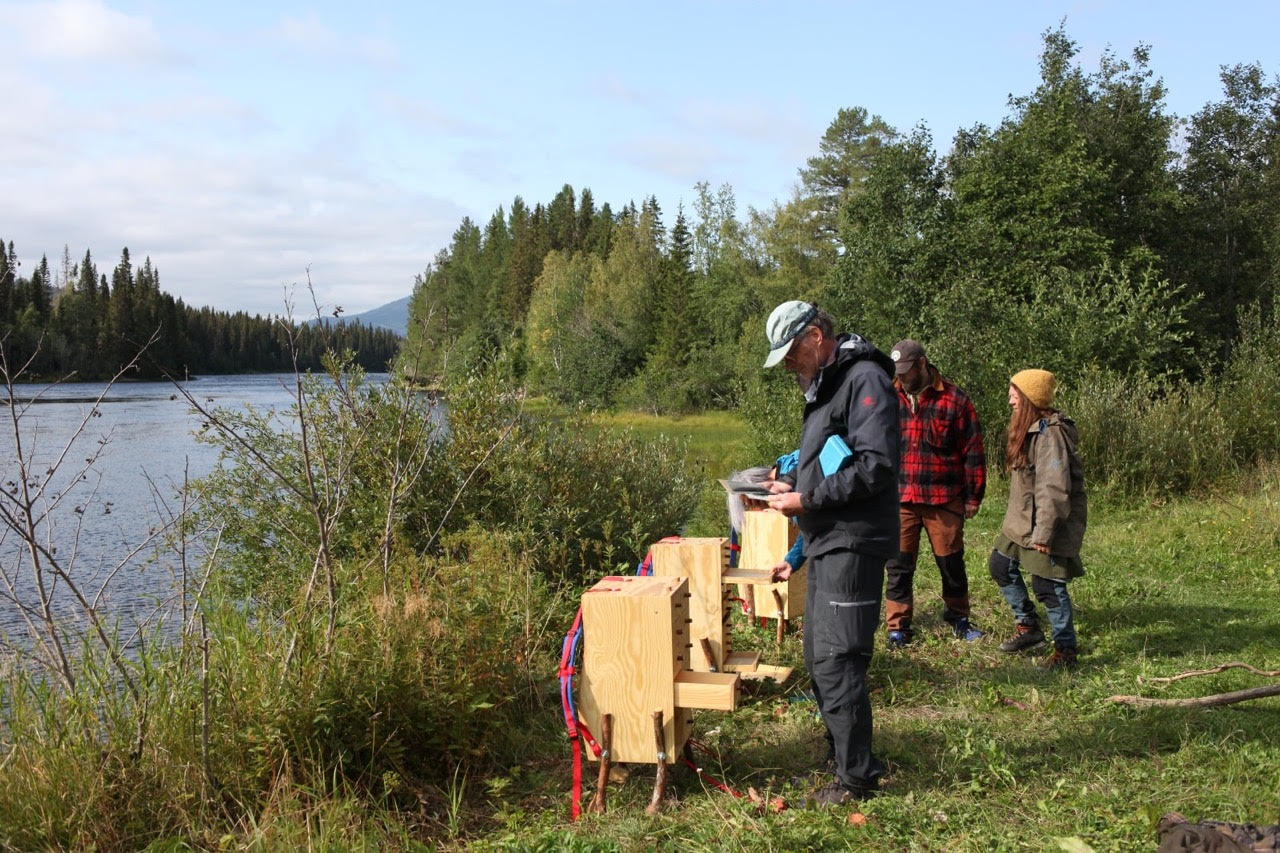
Presentation of the research during Konstdygnet 2021 (Örebro).
Konstdygnet - Örebro Konsthall
November 2021
Residency and seminarium in collaboration with Folkrörelsernas Konstfrämjande and Sveriges Konstföreningar
Curator in residency: Alba Folgado
As part of Konstdygnet residency I explored the way in which social movements have contributed to rethinking, expanding and democratizing the outreach of art in Sweden. The research analyses the tools and media that artists and organizations have rescued fromthe traditional “activist repertoire” and incorporated into their practice (such as free radio, music, andactive presence in nature and public spaces).
![]()
Det naturliga kontraktet. Detail of the nomad archive (image courtesy of Konstfrämjandet Jämtland).
Between August and October 2021 I conducted a number of interviews with artists and organizations working in different parts of Sweden. Then, I made a selection of projects based on three factors: location (out of the white cube), audience (reaching beyond the art world) and topic (dealing with current socio-political issues). The purpose of these interviews was to map and understand the different ways art affects and is affected by context, resources, social issues and nature. After this process of gathering information and testimonies it became clear that, even before the pandemic art has moved physically and conceptually out of the gallery space, appropriating spaces like a forest, a lake, a workers’ archive, a future town hall or the digital world. The reason for this movement is that, although these spaces can be more challenging than a museum or a white cube, they give visibility and coherence to the projects they house. Many times it is the space itself that inspires the action, and other times it facilitates interaction with different publics and passers-by.
I also observed that the studied examples produced not only an artistic experience for the public, but also facilitated bonding and knowledge exchange by holding informal conversations. These (talks and interactions) are key aspects of human socialization that were hindered due to prolonged isolation and distance, but which are now enhanced by art and other forces. In addition, it is signifcant that questions such as care and nature preservation have gained attention in these projects, also issues that have been widely neglected and which now appear as fundamental pillars for our future society. We need to develop a comprehensive and fair agreement for these needs, and art as an open and refective discipline should contribute to it.
In conclusion, each of the projects here presented focuses on a different topic and formalization. For some it is important to defend natural resources by mixing activism and informal constructions, while others want to rethink collectivity through crafts and forgotten traditions. But together, they even show that a lack of physical infrastructures or understanding is sometimes compensated with creative strategies and resistance. Therefore, I see in them examples of how art can help us regaining forgotten experiences and rights, or at least raising awareness over urgent struggles.
 Detail of the frst number of Vård och Värde, a collective newspaper about care work initiated by Gunilla Lundahl,
Detail of the frst number of Vård och Värde, a collective newspaper about care work initiated by Gunilla Lundahl, Nawroz Zakholy, Ulrika Flink and Jenny Richards.
 Rätten Till Vättern. Handmade poster announcing an action next to Vättern (image courtesy of Österängens Konsthall).
Rätten Till Vättern. Handmade poster announcing an action next to Vättern (image courtesy of Österängens Konsthall). Lek för demokrati. Kids meeting with kommunstyrelsens ordförande Robin Holmberg at the same eye level (180 cm)
Lek för demokrati. Kids meeting with kommunstyrelsens ordförande Robin Holmberg at the same eye level (180 cm) to argue for their cause. (image courtesy of Konstfrämjandet Skåne).
 Detail of the digital cultural and multilingual newspaper Lyktan (source: Konstfrämjandet Västmanland).
Detail of the digital cultural and multilingual newspaper Lyktan (source: Konstfrämjandet Västmanland).
Interviewed and selected projects by Alba Folgado.
